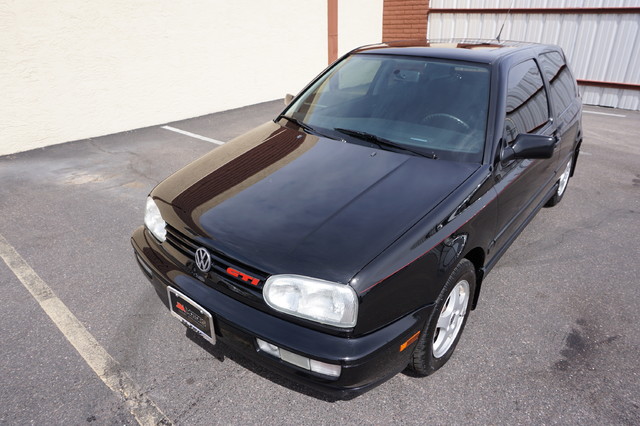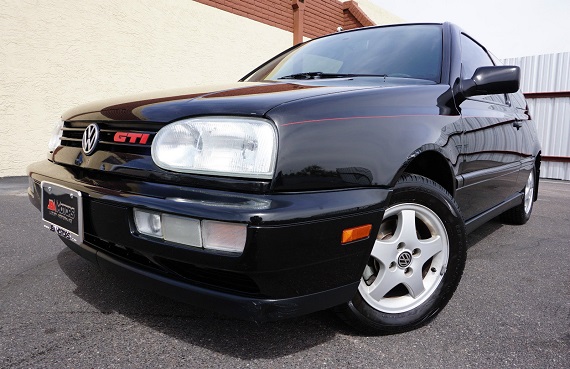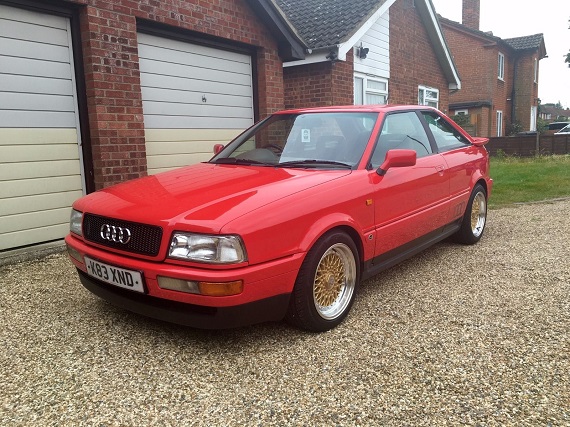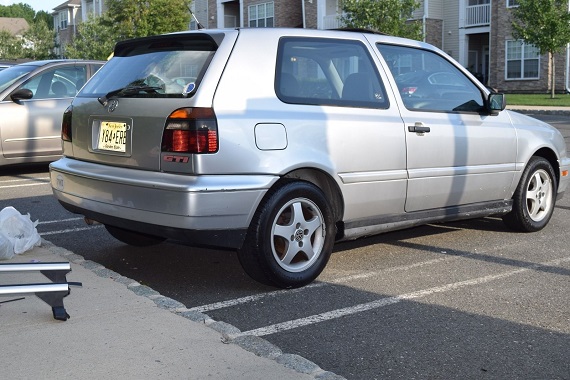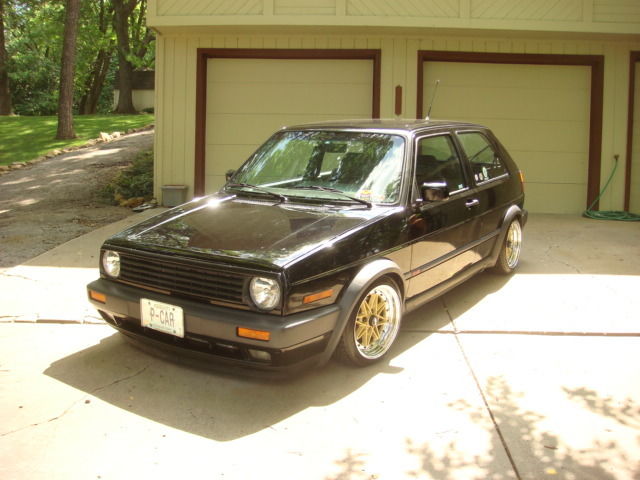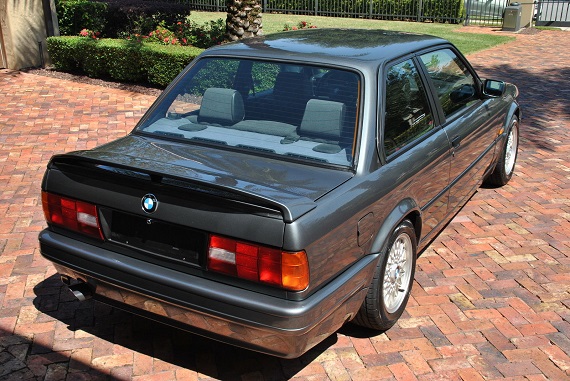The third generation Volkswagen GTI 2.0 might just go down in history as the least appealing of the brand name. Starting with the move to 16 valves in the second generation, the 8 valve models would play second fiddle as mostly an appearance package slapped onto an economy car. But while the second generation had the benefit of butch good looks, flared arches and the signature quad-round headlight arrangement to make you feel that you had gone upscale, when it came to the third generation’s base GTI it was a bit of a head-scatcher. It wasn’t that you didn’t get equipment; your $16,000 got you lots of standard items such as air conditioning, an upgraded stereo, power sunroof and door locks, and a few other premium-feel items (An alarm! Specially colored seat fabric!). The meat of the GTI was the appearance changes, though – from the 14″ alloy wheels to the dual-chamber headlights and projector fog lights, along with smoked tail lenses and a roof-mounted antenna, the special grill held the all-important letters “GTI”. But the performance of the ABA 2.0 inline-4 was standard Golf fair and the suspension wasn’t upgraded – this was, after all, just a Golf. That meant 0-60 in a lethargic 10 seconds unless you fried the front tires and knocked .2 seconds off – the result of all those “luxury” item additions. The 2.0 was a poser, then, and lived fully in the shadow of the high-output VR6 model which packed a full 50% more power in the same package but with upgraded brakes, suspension and wheels. The premium to jump to the VR6 was about $3,500 – a lot of money. But the leap in performance well paid off for your additional indebtedness, and consequently the 2.0 seemed to be popular only with college-bound Jersey girls who were convinced their compact economy hatch was actually a bumper-car ride at an amusement park. Few survive in the condition of this one today:
Tag: 2.0
Though it lived a short life in the United States over only two production years in 1990 and 1991, the Audi Coupe both started before that run and continued after in Europe. Along with the rest of the B lineup, the Coupe was refreshed for the “new” B4 lineup after 1992. Most notable in this production cycle of 2-doors was the introduction of the convertible model, the new V6 engine and of course, the fan-favorite S2. However, for those with a more modest budget and interested in better fuel economy, you could still get a EA827-based motor in a 2-wheel drive configuration. Displacing the same 2 liters an with 16 valves clattering away, the 138 horsepower front driver wasn’t much of a match for the girth of the B4, but it was cheaper than the 5-cylinder quattro models:
CLICK FOR DETAILS: 1993 Audi Coupe on eBay
2 CommentsOn a recent visit to Coventry Motorcar I was shown the “Tuning Drawer”: one pull-out drawer in an admittedly large and cool rolling tool chest full of cords, plugs, and modules. Today, that’s what it takes to tune a car; not cams, throttle bodies, head work or a high pressure fuel pump. Designing those parts to fit into modern motors and still have them leap through the hoops of getting certified by the EPA means that only the richest and most respected tuning firms can produce parts to fit into these complicated motors, and even then they’re more often than not highly reliant upon computer reprograming rather than internal rebuilds. Today’s GTi may not look particularly outrageous from the outside, but it brings us back to a more simple time in tuning, an analogue age where jumps in horsepower were measured in single digits, not in groups of 100 or more:
